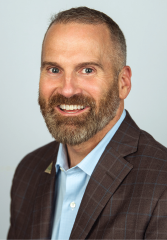“The ACR/ARHP Annual Meeting is the largest and most well-known rheumatology annual meeting in the world, and I feel the program integration makes it richer,” Mr. Haag says. “Across all ACR committees and subcommittees, there are now two to four health professionals on each, and there are one to two physicians on all ARHP committees and subcommittees. This governance integration has benefited our membership and the rheumatology specialty.”
A big success for the ARHP has been the Arthritis Care & Research (AC&R) medical journal. In 17 years, AC&R grew from six issues a year to 12 and increased from 200 subscriptions annually to 1,100. The manuscript acceptance rate dropped from 56% to 23%. Meanwhile, the journal’s editorial staff grew from one to four employees. This growth has propelled AC&R into the top tier of rheumatology journals worldwide.
Mr. Haag also helped create the ARHP’s invaluable online educational offerings, driven largely by the reality that health professionals often have limited resources and opportunity to travel for professional development.
The first online offering, the Advanced Rheumatology Course (or ARC), is a 19-module training program designed to help rheumatology practices bring nurse practitioners and physician assistants on board and train them quickly.
“It’s comprehensive—adult, pediatric—covering everything you need to know,” Mr. Haag says. “We also have fellows in training who take it and physicians who are not in rheumatology but in general practice and want to understand these diseases.”
Since 2008, ARC has generated $1.1 million in revenue for the ARHP. It is now in revision and will launch with CME in November 2018.
Additionally, in 2012, the ARHP began offering a basic-level online Fundamentals of Rheumatology Course (see p. 19) for new clinicians to rheumatology. The original five modules were so popular they were revised and expanded to 10, launching with CME in December 2017.
In January 2017, the ARHP launched six osteoarthritis and rheumatoid arthritis eBytes, free, bite-sized rheumatology modules that can be completed over a lunch break. “In their first year, more than 400 eBytes were taken for CME,” says Mr. Haag, noting that 50% of registrants were physicians.
Working with the ACR education department, [Mr. Haag] helped merge the ARHP Annual Meeting Program Subcommittee under the ACR Annual Meeting Program Committee so a single CME program could be offered to health professionals & physicians.
Future Outlook

Mr. Haag
For all the success, Mr. Haag thinks the ARHP’s online education is just getting started and has so much growth potential.

